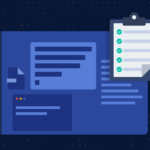SEO Trends for 2024: What’s New and What’s Here to Stay
As we step into 2024, the landscape of Search Engine Optimization (SEO) continues to evolve. Staying updated with the latest trends is crucial for anyone aiming to enhance their online…
The Importance of a Privacy Policy for Business Websites
A privacy policy is a statement or legal document that discloses how a company collects, uses, discloses, and manages a customer’s data. Here’s why having a privacy policy is essential…
Privacy Policy: Why It’s Essential for Your Visitors
A privacy policy is a statement or legal document that outlines how a company collects, uses, discloses, and manages a customer’s data. Here’s why having a privacy policy is essential…
How to Optimize Page Load Speed for SEO
Optimizing page load speed is crucial for both user experience and search engine optimization (SEO). A fast-loading website can improve your search engine rankings and keep visitors engaged. Here’s a…
Web Security for eCommerce: How to Protect Customer Information
As online shopping grows, so does the importance of web security. Protecting customer information is crucial for maintaining trust and ensuring the success of your online business. Here’s a guide…
How to Update Your Privacy Policy to Comply with New Regulations
Updating your privacy policy to comply with new regulations is essential to ensure your business remains lawful and builds trust with your users. Here is a step-by-step guide to help…
SEO for Beginners: The Complete Guide for 2024
Search Engine Optimization (SEO) is a crucial aspect of digital marketing. It helps your website rank higher in search engine results, making it more visible to potential visitors. This guide…
The Importance of Cookies and How to Use Them in Compliance with GDPR
Cookies are small data files stored on a user’s device by websites to track and save information about their browsing habits. They are essential for enhancing user experience, personalizing content,…
How to Ensure Your Website is GDPR Compliant
The General Data Protection Regulation (GDPR) is a regulation in European Union (EU) law on data protection and privacy. It applies to all individuals within the EU and the European…






